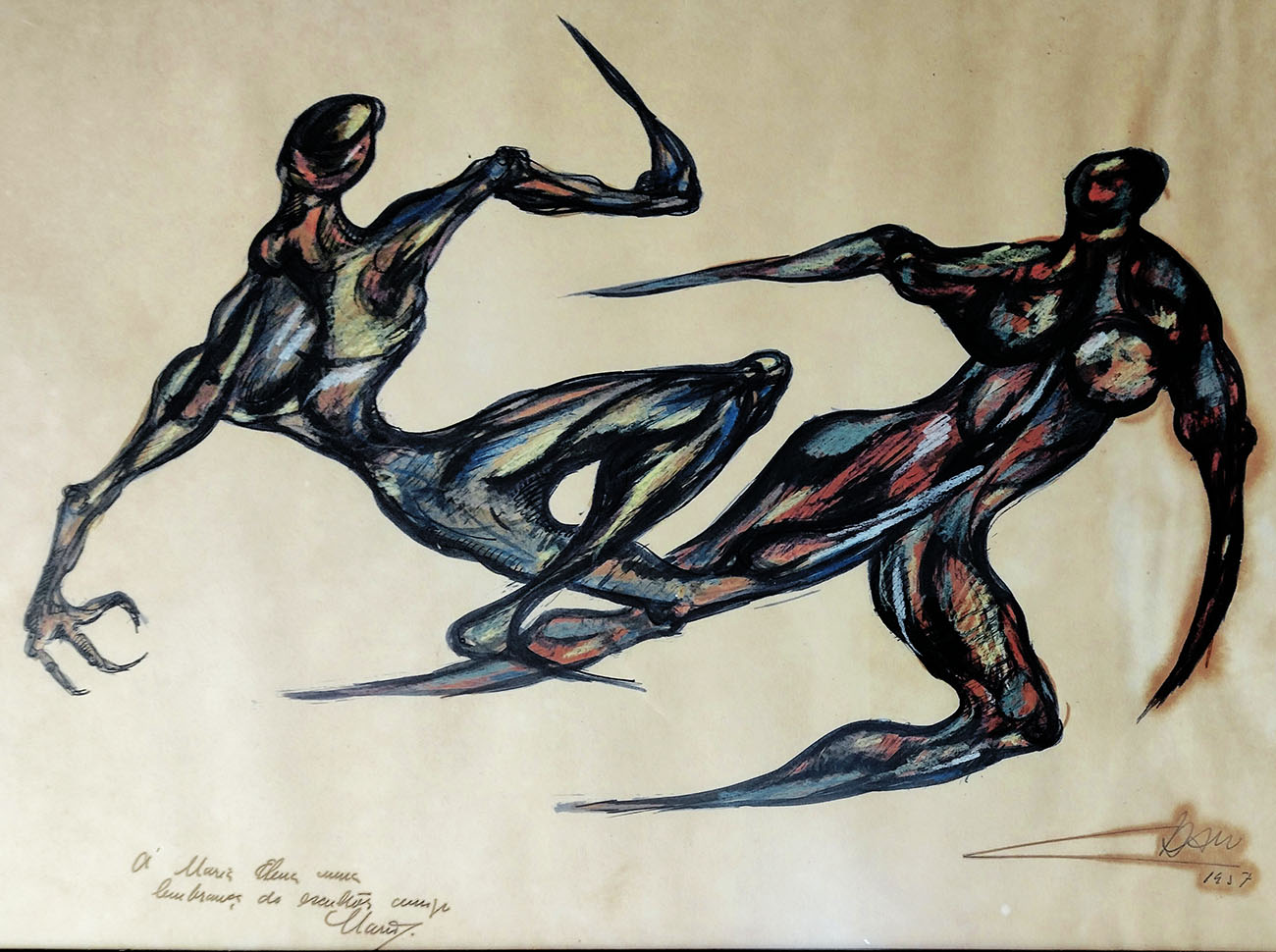Many sayings of capoeira masters are transmitted orally, mostly during initiation and training practices, and have no written records to quote. Like many popular sayings, the moment when they were first uttered is unknown and, from an academic point of view, even their authorship is debatable. Unless otherwise specified, all translations are by the authors.
Born in 1937, Master Curió (Jaime Martins dos Santos) founded the Escola de Capoeira Angola Irmãos Gêmeos de Mestre Curió, with several branches in Brazil and around the world, starting in the city of Salvador (Bahia). He has received an honorary degree from the Universidad Nacional Autónoma de México and other awards and honors from several institutions. Born into a family of angoleiros, he was the great-grandson of the legendary Besouro de Candeias, grandson of Pedro Virico (known as Curió, the nickname he inherited), and son of José Martins (Pena Dourada). He became a disciple of Master Pastinha at the age of eight.
Scenes of Subjection (Oxford University Press, 1997), 127.
See → (in Portuguese).
Sidney Chalhoub, Trabalho, lar e botequim: o cotidiano dos trabalhadores no Rio de Janeiro da belle époque (Editora da Unicamp, 2001), 78.
Luiz Rufino Rodrigues Júnior, “Exu e a Pedagogia das Encruzilhadas” (Phd diss., Universidade do Estado do Rio de Janeiro, 2017), 33, 40.
Mestre Pastinha, Capoeira Angola (Fundação Cultural do Estado da Bahia, 1988), 52. Born in 1889, Vicente Ferreira Pastinha learned capoeira when he was a kid from an “old African man” who saw him getting repeatedly beaten up in the streets. Master Pastinha was responsible for the codification, unification, and consolidation of the practice of capoeira angola, of its teaching and philosophy. His concepts eventually spread all over Brazil through his followers. He taught capoeira for forty-two years before officially founding the Centro Esportivo da Capoeira Angola (CECA) in Pelourinho, a place used for slave auctions in colonial Salvador (Bahia), its name a reference to the whipping post located in its main square where enslaved Africans were punished. CECA became a cultural hub for Black people, but in recent decades gentrification forced most of them away. Master Pastinha died in 1981, having spent his last days in Pelourinho mostly forgotten, helped by his wife Maria Romélia and a few friends.
Rufino, “Exu e a Pedagogia das Encruzilhadas,” 40.
Virgílio Maximiano Ferreira was born in 1944. He was introduced to capoeira angola by his father, Master Espinho Remoso, in 1954. He started his own capoeira classes in a neighborhood in Salvador called Fazenda Grande do Retiro after his father’s death. He was president of the prestigious Brazilian Association of Capoeira Angola (ABCA).
Édouard Glissant, Caribbean Discourse, trans. J. Michael Dash (University Press of Virginia, 1989), 14.
Critique of Black Reason, trans. Laurent Dubois (Duke University Press, 2017), 131.
Mbembe, Critique of Black Reason, 46.
University of Chicago Press, 2015, 144, 167–68.
The lyrics come from da Silva’s song “Malandro não vacila.”
A verdade seduzida: Por um conceito de cultura no Brasil (DP&A, 2005), 159–60.
Mestre Pastinha, Capoeira Angola, 35.
Mestre Pastinha, Capoeira Angola, 37.
Sodré, A verdade seduzida, 154.
Ciro Lima, now fifty-nine years old, founded the Capoeira Angola Studies Group in 1987 and was officially recognized as a mestre de capoeira by the late Master João Pequeno, a disciple of Pastinha, in 2001.
Sodré, A verdade seduzida, 155.
The cabaça, attached to the lower part of the berimbau and used to amplify sounds, is made of the gourd-like fruit of the calabasha tree, hollowed out, dried, and opened in a way that is often imagined as a talking mouth.
DPI/Iphan, Dossiê 12: Roda de Capoeira e Ofício dos Mestres de Capoeira (Iphan, 2014), 103.
DPI/Iphan, Dossiê 12, 103.
Mestre Pastinha, Capoeira Angola, 41.
Mestre Pastinha, Capoeira Angola, 41.
Critique of Black Reason, 144–45. Emphasis in original.
Christina Sharpe, In the Wake: On Blackness and Being (Duke University Press, 2016), 107.
Ashon T. Crawley, Blackpentecostal Breath: The Aesthetics of Possibility (Fordham University Press, 2017), 2.
Claudio Medeiros, História da experiência das epidemias no Brasil (GLAC edições, 2021), 120–22. Emphasis added.
Luiz Noronha, Malandros: Notícias de um submundo distante (Relume Dumará, 2003), 102.
Noronha, Malandros, 102.
Medeiros, História da experiência das epidemias, 122.
Noronha, Malandros, 64.
Eduardo Stelmann Gambôa Júnior, “‘Vai trabalhar vagabundo’: A malandragem no banco dos réus” (undergraduate diss., Pontifícia Universidade Católica do Rio de Janeiro, 2013), 29.
Inspiration for the idea of improvised space as undocumentable comes from Fred Moten, “revision, impromptu” →.
